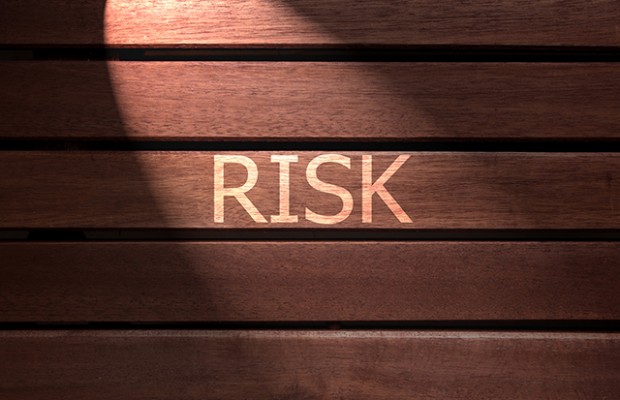|
Reblogged from TheBrewerMagazine.com (written by Jon Sicotte)
Kerry Thomas, the head brewer at Edge Brewing in Boise, Idaho, probably went to work on July 10 with the usual amount of care that any brewer has when it comes to safety — be watchful, be careful and follow the rules like she had every brew day. But during that brewing session of a Double IPA named Obligatory, the 15-barrel brew kettle got to boil, hops were added and a boil-over started. Thomas turned, just a second from her favorite beer to make sure everyone else was out of range and was greeted with a wave of boiling wort as she turned back around. She jumped from the brewstand as fellow employees doused her with cold water. But, the damage was done. Thomas, who received seven skin grafts about a week later after being rushed to the Burn Center at the University of Utah Hospital in Salt Lake City, had second and third degree burns to 30 percent of her body, including her right arm, shoulder and parts of her torso. Her husband, Cory, said through their GoFundMe account that only 66 percent of burn victims with that amount of damage live. “I’m glad we didn’t know this statistic until today,” he wrote on August 4. Steve Koonce, the Director of Sales and Marketing at Edge, said that Thomas has a long road ahead of her, but she is key in the success of the 1,200 bbl. brewery. He hopes by sometime in September that she can return to the brewery, if not to work, at least to share a smile and maybe some brewing knowledge. “It will be important to have her back, but it’s going to be up to her and her husband Cory to be 100 percent that she can take care of herself. That’s first,” he said. “She really wants to come back and all we have talked about is brewery operation when we talk. “We have some important dates coming up and she is invested in the company. At the same time she knows the most important thing is that she gets better.” For Koonce, he said he’s seen his share of accidents that require a trip to the emergency room. Burns, breaks and scrapes happen, of course, but it’s reducing the chance of those daily that’s what owners and managers strive for. For Edge, Koonce said the nearly two-year-old brewery has already begun the process of purchasing a sensor for the kettle that indicates a boil over with a killswitch. A cold-water shower is going to be built closer to the brewstand, even closer than the Occupational Safety and Health Administration (OSHA) standard. “We are going to look into a lot of stuff to make sure that something like this could never happen again,” he said. “I can say with a level of confidence that this will not happen again.” Although OHSA did have to get involved with Edge Brewing, it’s a rare occurrence throughout the United States. In a public record search of OSHA’s database, in the past five years only six major accidents have occurred in a brewery setting, with just one leading to death. That happened after a Boston Beer Co. employee was struck by a forklift and died after complications during surgery. The other instances led to either burns, cuts or fractures. In a separate search, only eight breweries in the country have been cited for violations by OSHA since January 1, 2014 with 54 total serious level violations. Thomas’ story is rare, but major accidents can happen in an industrial setting like a brewhouse. Minimizing risk of injury to not just employees, but patrons as well is key. Fred Maier, the owner and vice president of Pittston, Pennsylvania-based Susquehanna Brewing says along with keeping patrons safe, keeping his employees safe through the brewing process is just as key. “We put steel-mesh grates over anything hot,” he said, noting heat exchangers. “We cover things up where you could really burn yourself. You can feel the heat radiating off of it. God forbid someone just brushed against it.” Susquehanna has been listed as a top 10 place to take a brewery tour in a list published online by USA Today. Maier said the 10,000 bbl. brewhouse that has been open for three years is very adamant when it comes to warning the public during the tour that action is happening all around them. “If it’s shiny it could be hot. Don’t touch anything, use common sense,” said Maier, who runs an hour-long tour on Saturdays. “Our brewhouse is on a raised floor that is painted caution yellow. It’s constantly reminding people to please watch their step.” The hardest functions can be outside the realm of tours when dealing with the public. Fundraisers or other private events bring in, sometimes, a different clientele. “There is one thing when you go on a brewery tour, you kind of know what to expect. It’s another thing when someone comes to a function, a mixer, they don’t think of it being in an industrial space,” Maier said. “We have done a good job of covering up things and making sure floor drains and things like that are in place. “They are simple precautionary and they cost a little money upfront but it takes a lot of danger of people walking around off the floor.” Maier said that Susquehanna has ‘a pretty healthy’ insurance umbrella policy. “We consider the brewery our number one salesman so we … wanted to move thousands of people through it over the course of a year. So it was built into the insurance to keep ourselves out of a jam.” Although they do not have a set policy, Maier said that Susquehanna rarely sees parents bringing children to the tours, but they don’t turn them away. They just make sure to tell parents to keep an eye on precocious children. “I have kids, so I know what it’s like,” he said. “You have to remember it’s a working brewery but that is few and far between [where parents bring kids]. If it happens once or twice a year that is a lot.” Although Koonce said Edge Brewing will have to pay more in insurance premiums because of the accident to Thomas, it doesn’t hurt the brewery too much moving forward. After a solid first year and many upgrades to increase capacity to about double its 2014 output, Koonce said it will hurt Edge’s bottom line for a while, but it will recover. And it will do so with even more safety measures in mind. “We don’t take workplace safety lightly anyway from the brewers to the restaurant staff,” he said. “We are going make sure the brewers know what can happen … when they are trained they are going to watch the boil. Don’t try to do more than that at once. “If we have to do something to be safer, we are going to do it. We can’t have something happen again where we lose someone like Kerry who is so important to our business. She makes the beer! She’s the one that had made all of it up to this point. We aren’t going to mess around after this particular accident and we don’t want it to happen again.”
1 Comment
|
WinStar
|
|
© 2024 WinStar Insurance Group
13625 Ronald W. Reagan Blvd. Building 3, Suite 100 Cedar Park, TX 78613 |
IMPORTANT NOTE: This Web site provides only a simplified description of coverages and is not a statement of contract. Coverage may not apply in all states. For complete details of coverages, conditions, limits and losses not covered, be sure to read the policy, including all endorsements, or prospectus, if applicable. Coverage CANNOT be bound, amended, or altered by leaving a message on, or relying upon, information in this Website or through E-Mail.
Licensed & doing business in the following states only: Texas, New Mexico, & Oklahoma
Licensed & doing business in the following states only: Texas, New Mexico, & Oklahoma


 RSS Feed
RSS Feed


